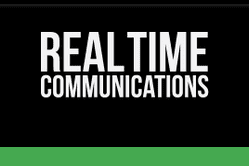PREVIOUSLY PUBLISHED TO WEBRTC’S REAL TIME COMMUNICATIONS
BetterCloud, a blog community that periodically releases research data related to the Tech World, recently released findings of a survey covering the trends for cloud-related activity within the Enterprise realm. More than 1600 total IT professionals and end-users participated in the poll.
Of those surveyed, 76 percent of them came from small-to-medium sized businesses with 14 percent from large-sized organizations. Everyone else fell between the gaps. With such a gap in participants, it’s very interesting to see the correlation between both groups of adoption and the common denominators that fall in between them.
This survey focused on the data related to utilization of real time messaging, distractions and the overall organizational impact of real time communications. The end-goal was to help businesses make more intelligent decisions when it comes to choosing better business technologies.
With little need for additional phone services, most small-to-medium sized businesses choose not to increase investments for phone systems, as they are considered unnecessary to the organization. Yet, 57 percent of all groups surveyed use two or more real-time messaging applications for both internal and external communications.
Some organizations are using as many as five messaging services at a time, based on activity and client communication. In fact, more than 20 percent of large enterprises admit that this is a very normal practice in their organization.
These same professionals strongly believe that real-time communications will totally replace e-mail as the primary method for immediate communication and collaboration. E-mail communications are still considered the preferred method for communications for obvious reasons, relating to storage, security and reference.
“As your company grows, expect the number of real-time messaging applications in your environment to grow too. This isn’t a phenomenon reserved only for real-time messaging either” said Scott Solomon of BetterCloud. He continued, “We’re seeing this trend unfold in many cloud application categories, from storage and collaboration to project management.”
Those three-fourths of professionals using Skype for Business and Google Hangouts tend to think highly of real time messaging platforms for collaboration, especially at a distance. Almost everyone using more a professional-grade platform confesses to drastic improvements in collaboration and workplace productivity through adoption.
There were 25 percent of users, including IT professionals, who said they feel their organizations are less productive due to real-time messaging services. It makes you wonder if they are just telling the truth or if there is an internal issue, such as bad management or low-grade platforms, in the mix – or, if they just don’t know how to use them. Let’s not fail to mention, 13 percent of those surveyed aren’t even using real-time communications in the workplace.
When it comes to IT professionals and real-time communications, not only do they go outside the boundaries of approved real-time messaging platforms, they are also 12 percent more likely to adopt this form of communication for productivity’s sake.
Consensus rings in. With lack of training and discipline when using tools that connect people in real-time, there will obviously be distraction and loss in productivity. Let’s not label this as a technology fault. This is a factor that organizations need to take into consideration when implementing a power technology into their daily operation – period.
When we use real-time communications as a tool, we must remember to stay disciplined. It’s easier to gab when no one can hear us, but it’s not different than sitting next to your best friend when trying to meet deadlines for a major project.
In the future, it is most likely real-time messaging will be the primary choice for communication in the workplace. Some say, the future is already here.




